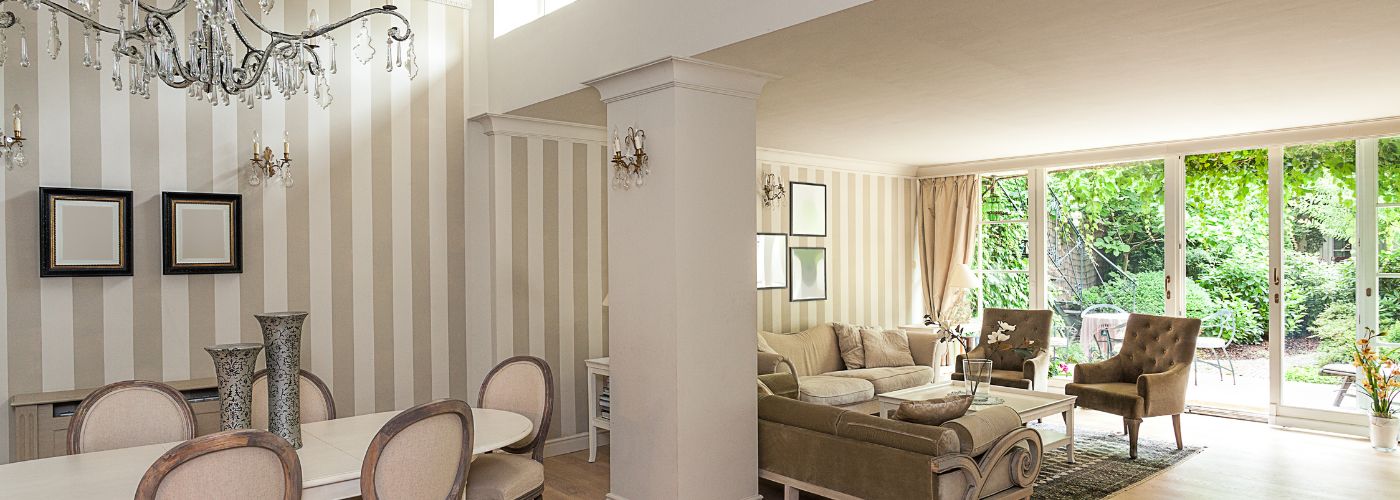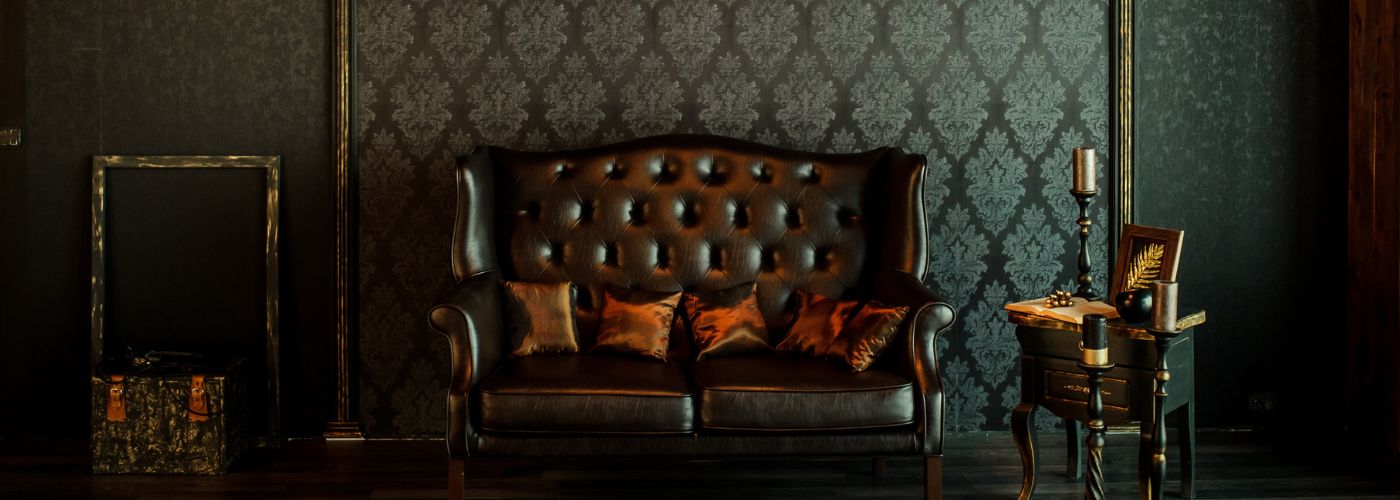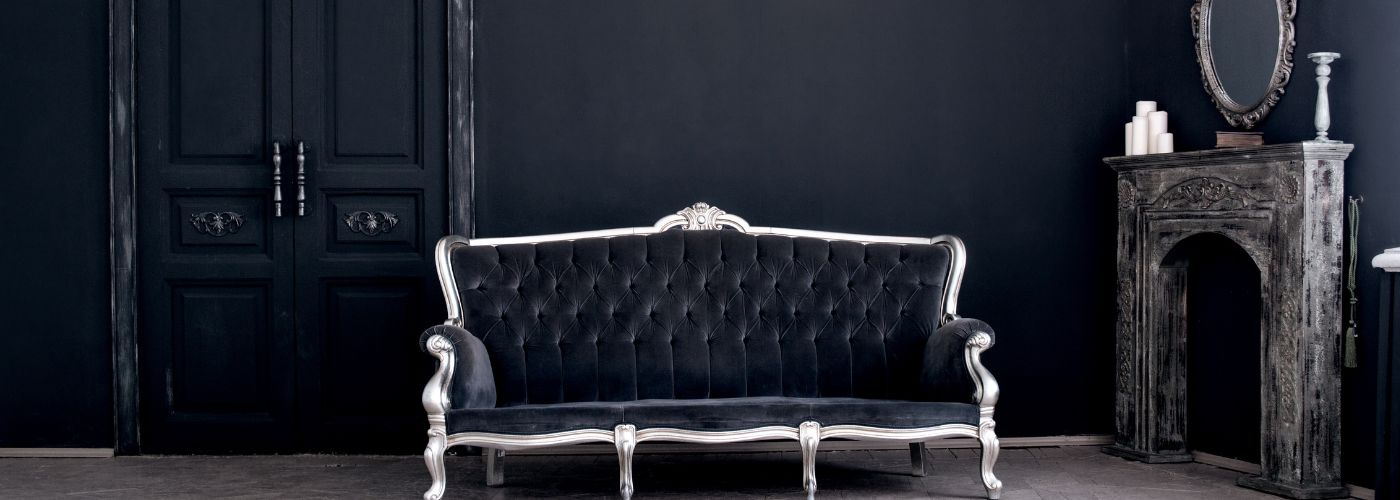Imagine stepping into a home where the air is thick with nostalgia and the decor invites you to linger just a little longer. Vintage home design is more than just a trend; it’s an art form that marries history with personal expression. We’ll be going over the best tips on how to create a vintage home design.
Tips To Create A Vintage Home Design
To craft a vintage home interior design that truly resonates with character, start by immersing yourself in the aesthetic of your chosen era. Whether it’s Victorian elegance or mid-century modern flair, have distinct themes in mind. This is by far one of the most essential tips in how to create a vintage home design.
For a cozy cottage feel, embrace rustic elements such as exposed beams, weathered wood finishes, and vintage textiles. Incorporate antique furniture pieces that tell a story—think ornate armoires or well-loved sofas with unique patterns.
Also, remember to keep window treatments simple yet elegant; sheer curtains offer lightness, while heavier drapes provide intimacy. We recommend incorporating vintage-inspired accessories to complement your furnishings.
Look for antique mirrors that can add a sense of space and light, or handcrafted pottery that showcases artisanal craftsmanship. Incorporate elements such as brass candlesticks or decorative bowls made from natural materials to enhance the overall aesthetic.
Best Colors For Vintage Home Themes
When it comes to selecting the best colors for vintage home themes, think beyond the usual earth tones and pastels. Jewel tones like emerald green, ruby red, and sapphire blue can add a rich depth to a space that feels both nostalgic and elegant.

Pairing these with warm neutrals such as cream or beige creates a balanced backdrop where vintage decor can truly shine. Don’t shy away from experimenting with unusual combinations—like mustard yellow against deep navy—to evoke that delightful sense of whimsy often found in retro design.
Incorporating texture is another essential aspect of crafting your vintage aesthetic. Look for fabrics that have history, such as worn denim, velvet drapes, or antique lace tablecloths. Mix materials thoughtfully; consider pairing sleek mid-century furniture with intricate wooden accents or battered quilts layered on upholstered chairs for an inviting touch. Keep all of these thing in mind when learning how to create a vintage home design.
Remember to accessorize wisely—found objects from flea markets or grandma’s attic can hold stories and character that modern pieces simply can’t replicate.
Where To Source Vintage Items
Infusing your home with vintage flair starts with the art of sourcing authentic pieces that tell a story. Thrift stores and estate sales are treasure troves waiting to be explored, often housing hidden gems overlooked by the masses.
Don’t underestimate online marketplaces either; websites like Etsy or even local Facebook groups can connect you to unique vintage finds from artisans and collectors who share your aesthetic passion.
Once you’ve sourced those special items, layer them thoughtfully within your space for maximum impact. Consider mixing different design eras rather than sticking to a single period—this eclectic approach adds depth and character.
For instance, pairing mid-century modern furniture with Victorian accents creates an unexpected harmony that captivates the eye. Don’t hesitate to reimagine how these pieces fit in your home; a vintage trunk can become an end table, while mismatched china can serve as vibrant wall art.
Lighting Ideas For Vintage Home Designs
Use lighting to your advantage when how to create a vintage home design. Integrating fixtures like wrought-iron chandeliers or ornate table lamps that evoke nostalgia while providing ample illumination.

Pair these with warm-toned bulbs to create an inviting ambiance reminiscent of bygone days. Mixing different light sources, such as pendant lights and sconces adorned with antique finishes, can enhance the layered effect and draw attention to your vintage decor.
Additionally, don’t overlook the power of window treatments; sheer lace curtains or heavy drapes in rich fabrics can frame your windows beautifully while maximizing natural light during the day and softening it at night.
Incorporate decorative mirrors to reflect both artificial and natural light throughout your space—an age-old trick used by vintage designers that remains effective today.
Use Decor & Wall Art To Your Advantage
To create a vintage home design that truly resonates, use large wall decor and art frames to your advantage. Seek out framed photographs from different eras, antique mirrors, or quirky trinkets at thrift stores to tell a story about each piece’s history.
Instead of opting for modern frames, consider using patinated wood or ornate metal ones that reflect the time period you wish to emulate. The right wall art can serve as conversation starters while infusing your home with an artistic vibe that melds old-world elegance and modern sensibility beautifully.
For art, consider incorporating classic pieces such as vintage botanical prints, sepia-toned portraits, or abstract works from mid-century artists. These styles can add depth and character to your walls while remaining cohesive with the overall vintage theme.
To further enhance the ambiance, mix textures by layering fabrics—velvet cushions, linen curtains, and patterned rugs can create a warm and inviting atmosphere that echoes past eras.
Consider Mixing Modern Themes To Your Vintage Design
One of the most exciting elements of creating a vintage home design is the opportunity to blend eras and styles. Consider mixing modern themes into your vintage aesthetic to create a unique conversation piece.
For instance, pairing mid-century modern furniture with Victorian accents can yield an intriguing juxtaposition that highlights the best of both worlds. A sleek, contemporary coffee table might serve as an unexpected base for displaying antique books or brass candlesticks, allowing each piece to shine in its own right while also enhancing the overall visual appeal.
Don’t shy away from playful color schemes when curating your vintage look; tints like dusty rose or faded teal can refresh vibrant retro prints and memorabilia. Moreover, layers are key—combine textures by draping contemporary textiles over vintage finds; imagine a plush fleece throw on an intricate damask armchair!
Overall, keep all of these tips in mind when learning how to create a vintage home design.

How to Love Your Home Again
Sometimes we can feel uninspired and tiresome with the home we once loved so dearly.
Jan
Affordable Ways to Glamorize Your Home
There are many affordable ways to glamorize your home; elka Interiors & Construction is here
Jan
How to Stage Your Bathroom to Add Appeal
Home staging is a great way to incorporate an added sense of luxury and increase
Jan